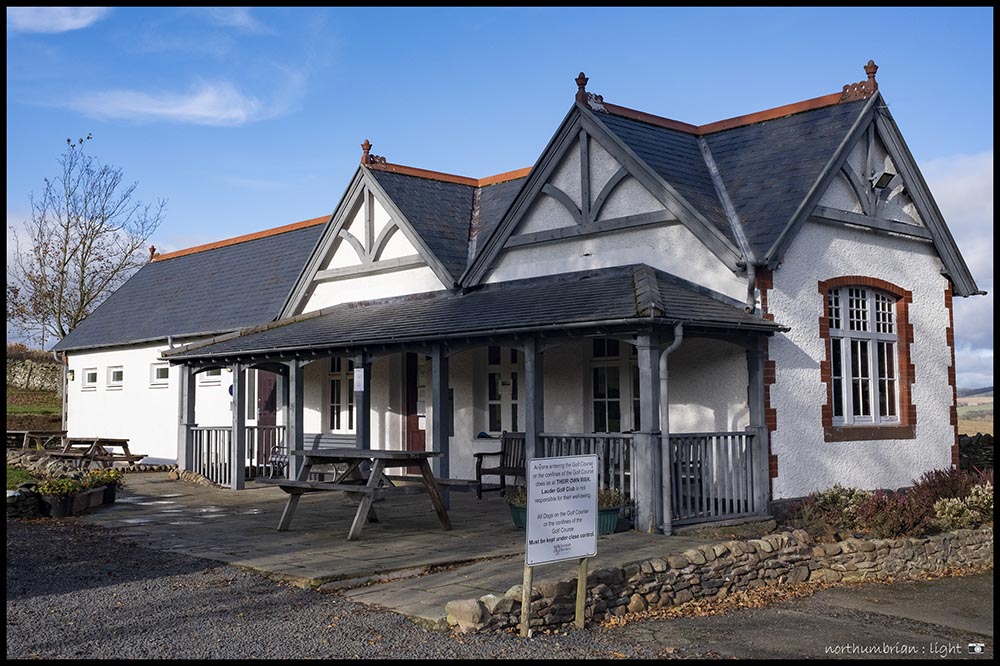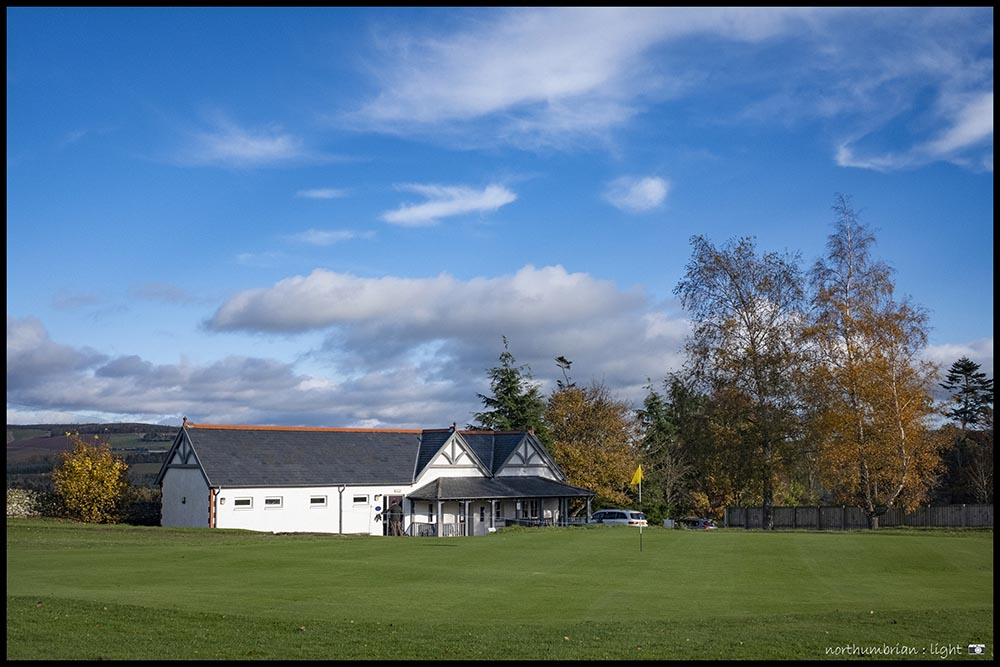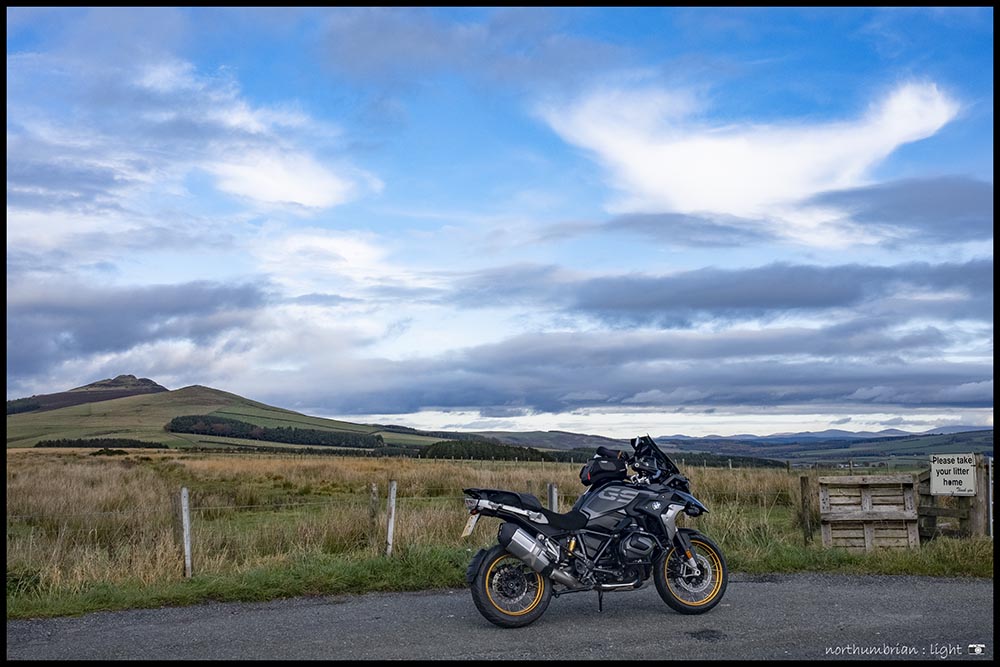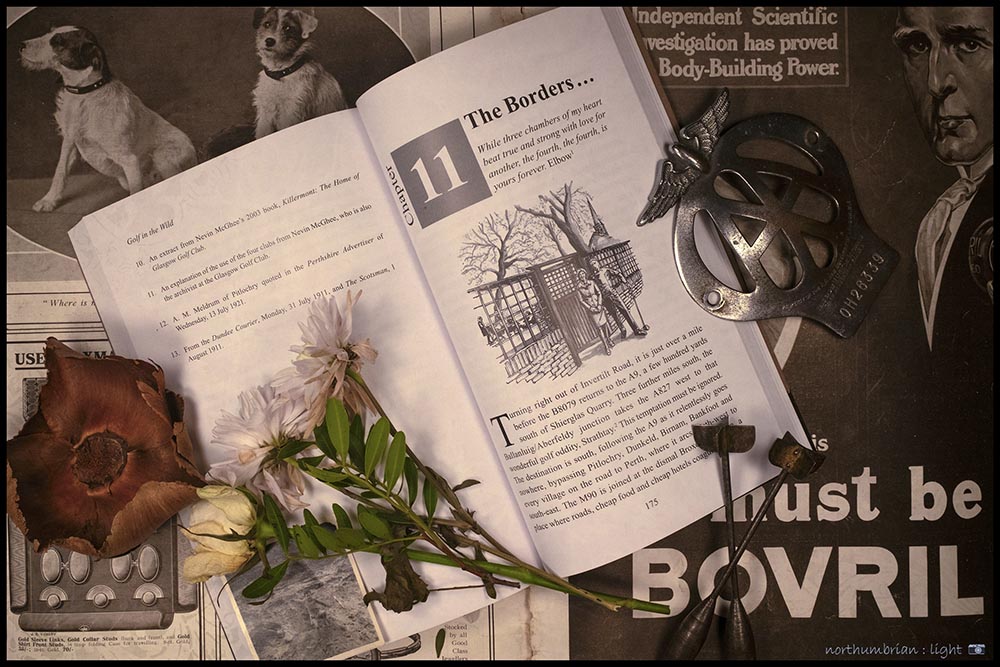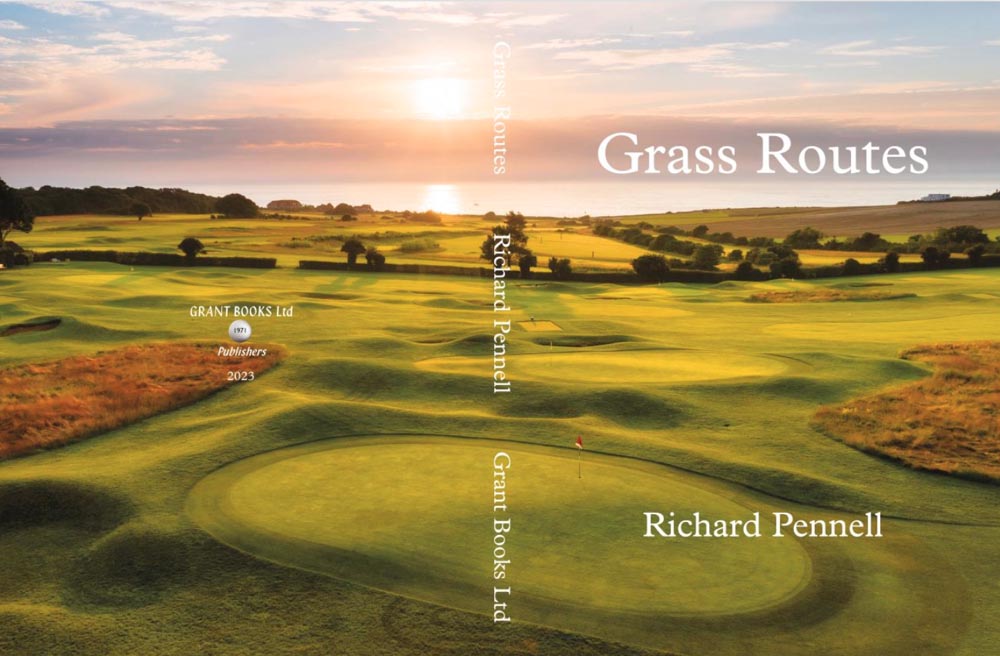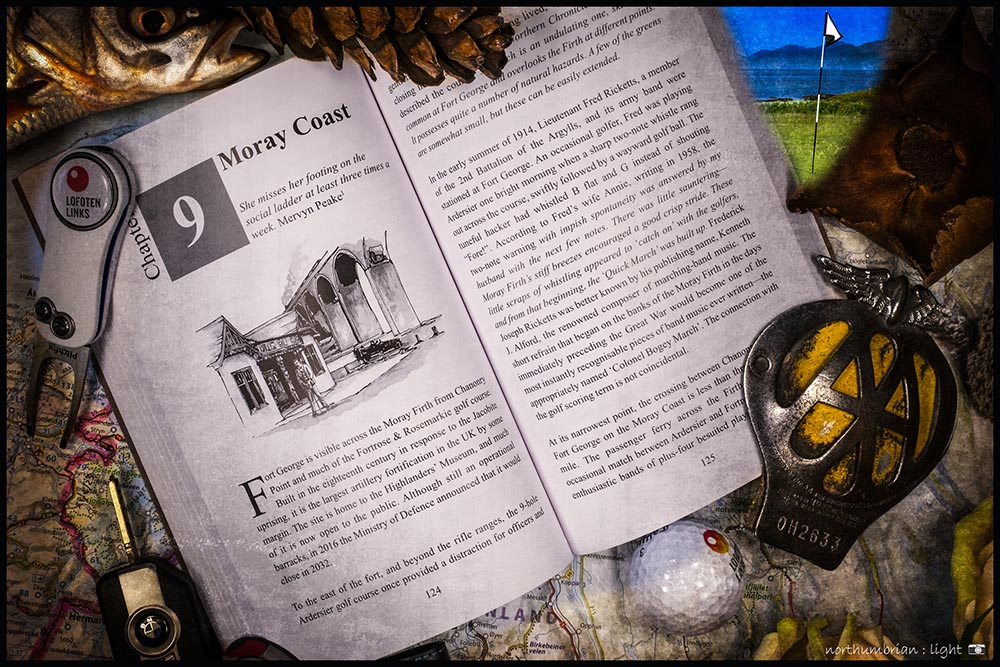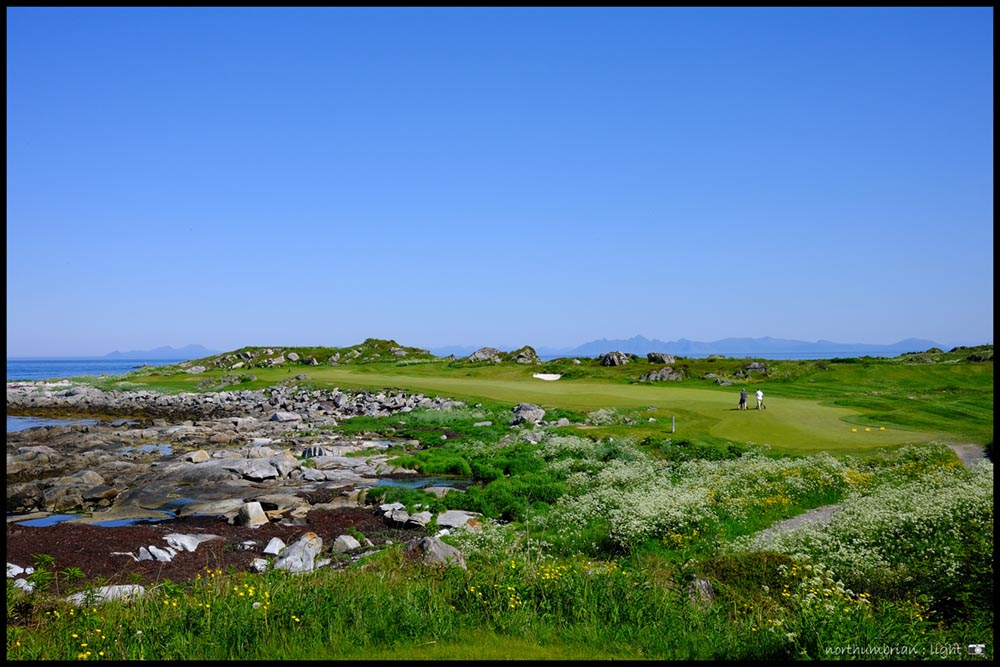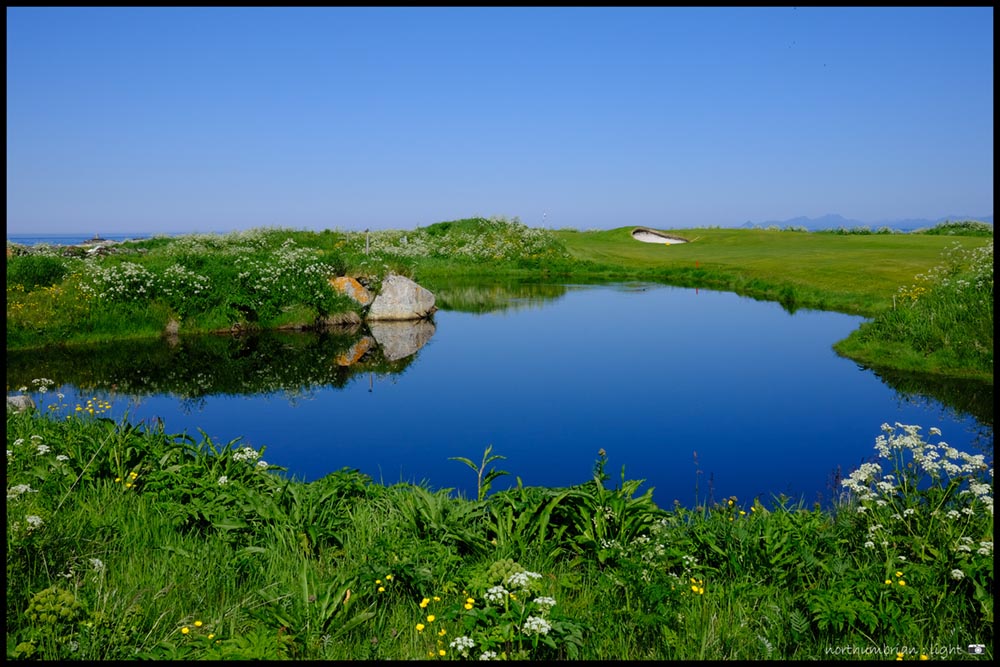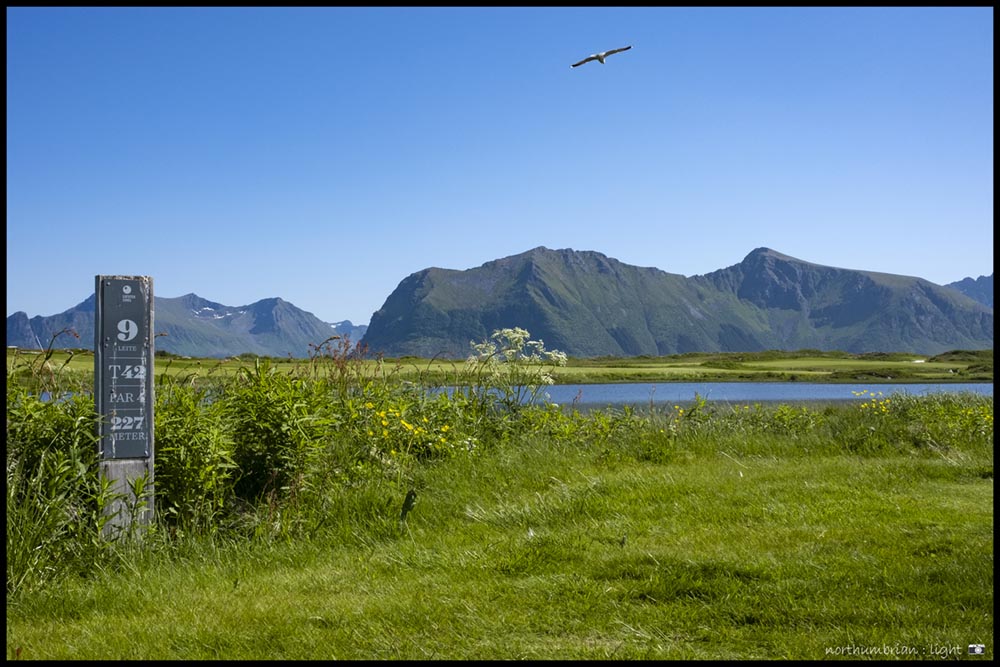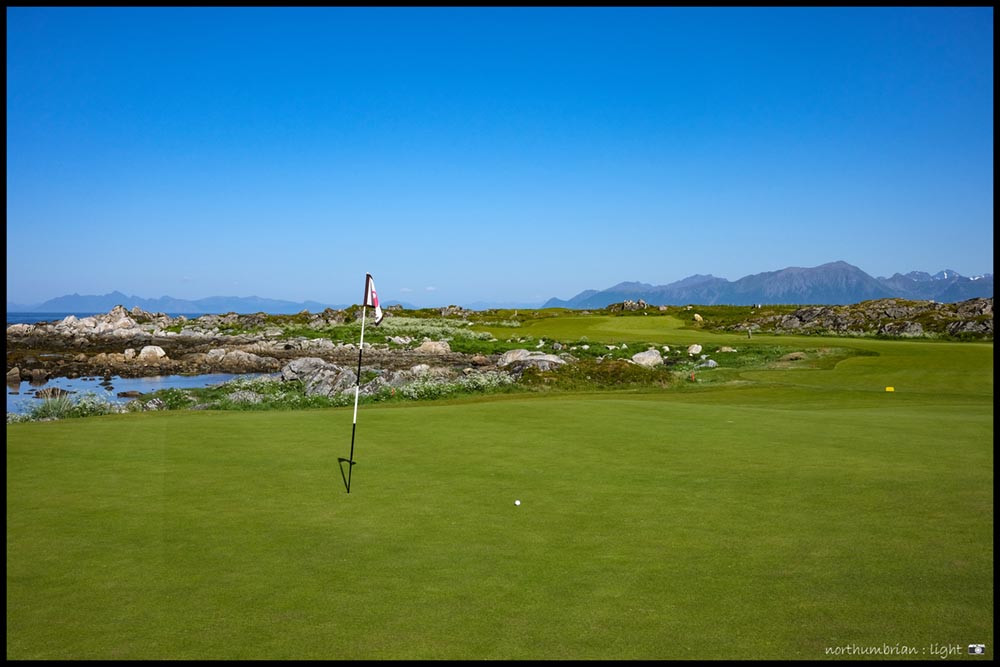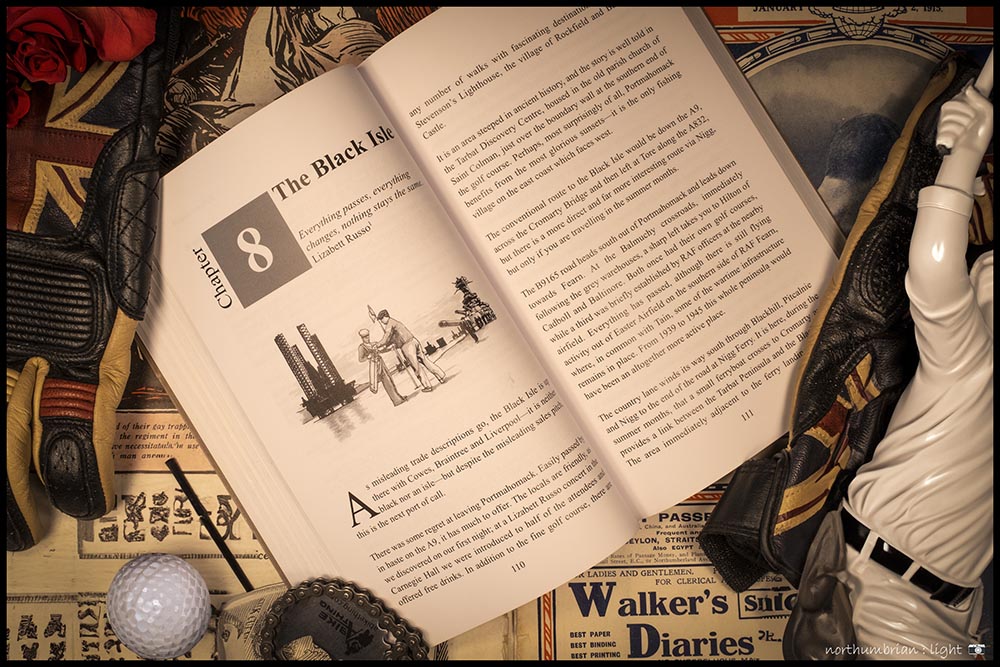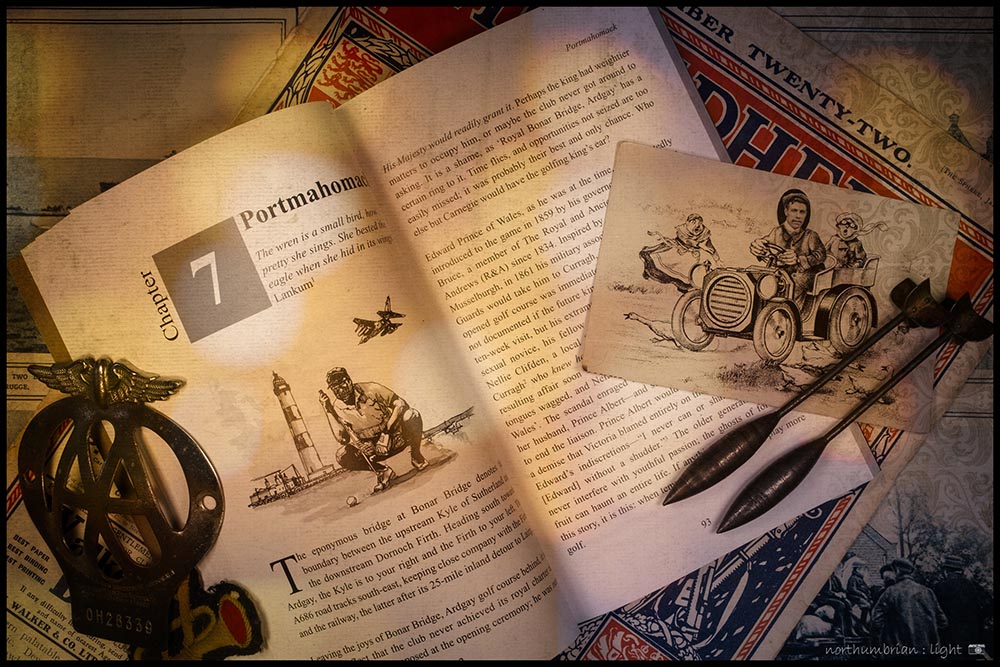This post ‘reprinted’ from Richard Pennell’s excellent Substack site – Stymied
I knew Robin Down was some kindred spirit from our first interactions; always looking beneath the surface of this game, and pulling up gems for the rest of us to ponder. So it was a delight to share his company for a few precious hours, and a further delight to read his gorgeous prose and hear it leap off the page in his voice.
What follows is therefore the first guest post on Stymied; an idea I’d been toying with, and now, halfway through his wonderful “Golf in the Wild”, it feels an honour to share his own reflection on a shared morning of golf at its best. We hope you enjoy it!
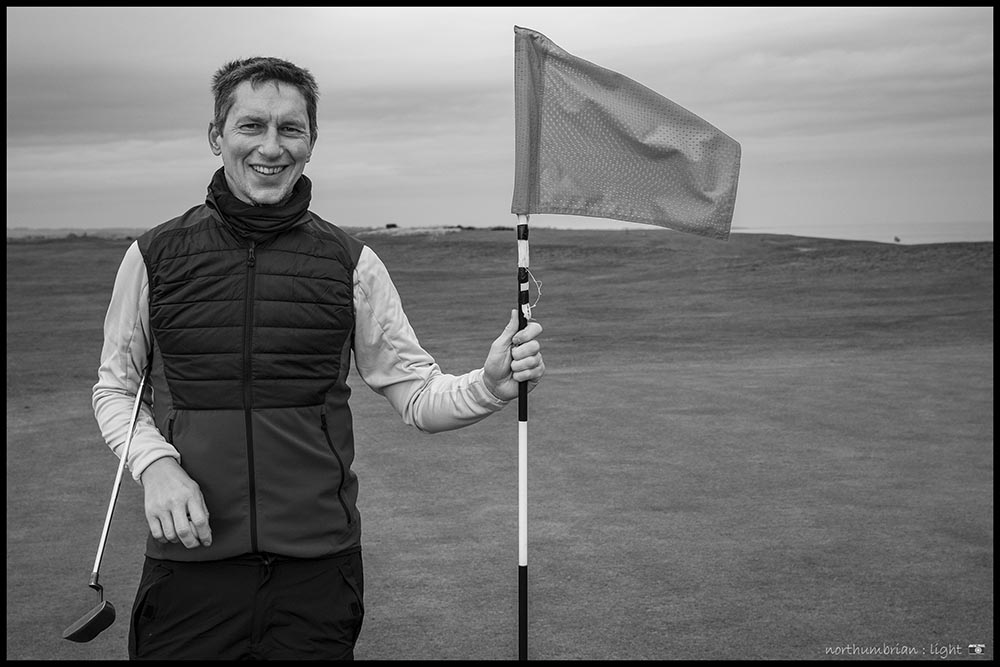
Richard Pennell, of Stymied fame.
Warkworth in a Winter Light
I have walked away from accidents on four wheels that would have been fatal on two. On this point alone, I will concede, my mother was right. I never received teenage advice, just maternal edicts – you are not having a motorcycle. Truth be told, my mind was elsewhere, focussed entirely on the equally fatal world of 1960s and 1970s Grand Prix racing. It was much later in life that her commandment was finally ignored, at an age when she was gone, and the teenage concept of immortality had been replaced by a strong sense of self-preservation.
Riding a motorcycle demands absolute concentration. It needs a light touch, co-ordination, mechanical sympathy, and spatial awareness. Riding through bends relies on acute distance estimation – enter one properly, it holds you in its arms (John Berger). On warm tarmac, at any speed, the heart sings.
If you believe the stereotypes, they are two tribes who never meet – those clad in greasy leathers and those in pressed check pants. Except, many motorcyclists wear textiles and, dare I admit, I have been known to play golf in jeans. I have my feet planted in both camps and the two endeavours are not as dissimilar as you might imagine. They require different skill sets but the mental approach is the same – staying in the moment, extended periods of deep concentration. Let your mind drift with club or bars in hand and, you will be visiting the rough. They both make you better drivers.
It was one of those misleading days in February when a bright light on the North Sea intimated too soon, the prospect of spring. From the high ground of the clubhouse at Warkworth, there is an uplifting panorama in an early morning light: high dunes, Alnmouth to the north, Amble to the south and, floating on a shining sea, Coquet Island, and its lighthouse. It makes the heart sing.
I am here to meet Richard Pennell, the man behind the excellent Stymied, a golfer’s blog – musings on a mysterious game. Both golfers, both compulsive writers, there is immediate common ground. The rambling, dangling conversation is reflected in the quality of the golf. Breaking all the rules about staying in the moment, our discussions run wild and free. It is a different sort of golf on this day where the company takes precedence over any thought of a good score – ugly distractions such as handicaps are not even mentioned. It makes for a thoroughly enjoyable and memorable round. The winter rules at Warkworth demand that balls landing on the fairway must be lifted and placed in the semi-rough to protect the course – for much of the round this has little impact for either of us.
Warkworth is played on three levels – the first, from the highest tee, takes aim at one of the two lowest greens. It is a glorious drive south into a bright winter sun. The ball disappears in flight, but the landing stage is generous and wide. A shanked pitch is the consequence of distraction and a too long winter break. The second plays north behind the high dunes to an obscured green – it is as good an opening to a golf course as any in Northumberland. In summer, the third is a dogleg right, climbing to the middle level, but in winter it plays straight and shorter before climbing to the fourth tee and the high plateau where the rest of the course is laid out. By the fourth tee, we are on full song – the joys of golf in wild places, the compulsion to write, travel and the passing of time. No subject is out of bounds.
I try not to think about it, I try not to let the old man in, but I am envious of Richard’s young years and his early introduction to the game – “my parents had somehow thought of a golf lesson as a short-term option for this energetic child”. By contrast, “I came to the sport late in life and like many of my contemporaries regret the years lost to other less rewarding pursuits; getting married (twice), having children (three) and consuming alcohol (too much)”.
It is another area of common ground between the diverse tribes. Motorcycle and golf manufacturers and the various administrations fret constantly about attracting a younger audience, but here’s the secret – none of us is getting any younger, today’s family man with too many commitments and too little time is tomorrow’s pensioner. In short, give the old guys and gals a break, try occasionally to nurture the converted. Not only does it make financial sense, but it is good for this aging demographic – anything that gets you out of the house, gets you talking, walking, riding – and thinking enhances physical and mental well-being. Anything to reduce our dependence on over-stretched health services must be good – to repeat that well-worn adage – you don’t stop riding because you get old, you get old because you stop riding.
On the golf course, you can keep playing for as long as you can keep moving, and even then, there are a variety of devices to ease the joints – the progression goes something like: carry bag, trolley, electric trolley, golf buggy, palanquin. The decision to hang up the helmet is a little more serious and complex.
I have always had a desire for speed. Even the early years on a pushbike were about how fast, not where or how far. Throughout fifty plus years of car ownership, the same principle has applied. In the right sort of four-wheel vehicle, you directly connect with it—you become part of the machine—but this in no way compares with life on a motorcycle. John Berger continued riding into his nineties:… except for the protective gear you’re wearing, there’s nothing between you and the rest of the world. The air and the wind press directly on you. You are in the space through which you are travelling. Your contact with the outside world is more intimate. On four wheels you can become part of the machine. On two wheels you are the machine.
By some margin, my favourite motorcycle books are written by Melissa Holbrook Pierson, author of The Perfect Vehicle and The Man Who Would Stop at Nothing. Melissa puts in words the unique sensations of being on two wheels and why, for the initiated, it is so important, so addictive. There is a quote that once heard, never quite goes away – I’m not going to be riding into my seventies, probably some people do, but perhaps they shouldn’t. And, yet, I am, with no thought of giving up – the stable of bikes is getting bigger, not smaller, the desire for long distance riding ever stronger. In an attempt to combine both passions, this summer I will ride to the Lofoten Islands to play golf under a midnight sun. The ferries and hotels are booked, I am going, but I am acutely aware this will be another season gone.
Melissa shares this anxiety … those ever-shorter leases on fine weather that blaze by and melt into cold. And it hits you: You will not get to go everywhere on a motorcycle that you want to. Motorcycling causes dreaming. Like a virus causes the flu. It makes you imagine far reaches, and long to get to them. Nor will I get to play golf in all the wild places of my imagination. As Melissa so succinctly puts it, we are riding towards the end and we both ache for another lifetime. In an exchange of emails, she reflected further: “It occurred to me how time slightly alters even a continuously pursued endeavour; in other words, motorcycling offers new significance on top of its old pleasures depending how old you are. This is just one of the reasons I have become fond of saying ‘Motorcycles are magic.’”
So many miles, so many golf courses, so little time.
Holes four through nine are played out across the top level where interest is added by a deep ravine which must be crossed at holes five and seven. There is the threat of deep rough on the seaward side of the outbound holes but aside from the ravine, the inward stretch is straightforward, but no worse for that. The greens are perfect and true and this in early February.
Richard makes for good company; educated, interested and interesting. I was recently asked who would make up my perfect four-ball – I chose Alice Cooper, Barack Obama and Bob Dylan, not for their golfing prowess but for the prospect of their conversation. Not for them, lives half lived. By contrast, a professional raised with the dedication necessary to succeed in the modern world of sport, is likely to have a limited world view – one such pro golfer proudly proclaims to have never read a book.
As we approach the 18th, Richard notices my bag tags. Alongside my home club, Allendale, there is Traigh, on the Road to The Isles and, Durness, as far northwest as you can go in mainland Britain and still play golf. They feature in Golf in the Wild and both clubs have been supportive of my book – more importantly, they are magnificent courses in remarkable settings. Richard is distracted by thoughts of driving to these wild extremities, so much so that his chip to the green is thinned into a waiting bunker. He makes cheerful reference to lack of concentration and what might have happened had he been on two wheels.
And by this observation, I know he has been paying attention. And this is what we do, we listen; we listen for stories; we listen for the perfect whipcrack as the ball finds the sweet spot on the face of the club; we listen for the delicious pop, bang, crackle of a Ducati V-Twin on the over-run.
Robin Down – golfing and riding in the wild.
Learn more about “Golf in the Wild” and “Going Home” via Robin’s website: https://golfinthewild.org.uk/.
